![]()
![]()
![]()
Use LEFT and RIGHT arrow keys to navigate between flashcards;
Use UP and DOWN arrow keys to flip the card;
H to show hint;
A reads text to speech;
36 Cards in this Set
- Front
- Back
|
Sickle Scaler: To Use and NOT To Use |

|
|
|
Sickle Scaler Unique Design Characteristics: Tip / Cross Section / Cutting Edge |
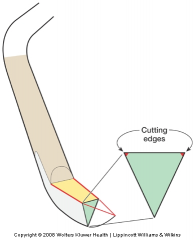
|
|
|
Sickle Scaler Unique Design Characteristics: Face to Handle |
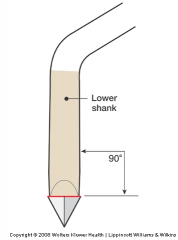
|
|
|
Sickle Scalers: Anterior and Posterior Designs |
|
|
|
Sickle Scalers: Uses |
|
|
|
Anterior Sickle Scaler: Establishing Angulation |
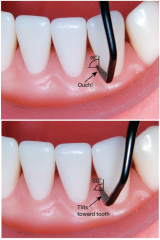
|
|
|
Anterior Sickle Scaler: Application of Cutting Edges Steps to Scaling the Anterior Teeth
|
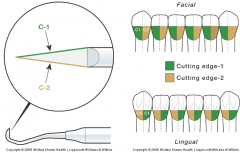
|
|
|
Posterior Sickle Scaler: What should you remember to help select the correct end? |
|
|
|
Posterior Sickle Scaler: 4 cutting edges for molar |
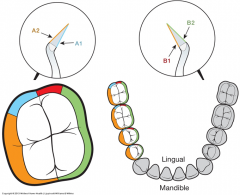
|
|
|
Posterior Sickle Scaler: Shank positioning and Scaling sequence |
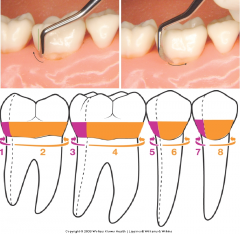
|
|
|
What should you always remember before you begin instrumenting? |
"Me, My patient, My light, My instrument, My fulcrum, My adaptation" |
|
|
Primary Teeth: How are they different for scaling? Size and Texture |
|
|
|
Primary Teeth: What Sickle should be used on Anterior Teeth? |
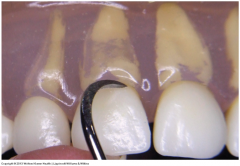
Smaller, thin anterior sickle: Nevi 1 |
|
|
Primary Teeth: What Sickle should be used on Posterior Teeth? |

Thin, Curved Working-End: Nevi 3 |
|
|
Universal Curet: Definition |
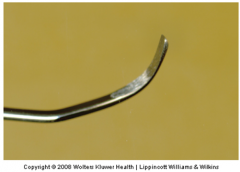
|
|
|
Universal Curet Unique Design Characteristics: Toe / Cross Section / Cutting Edge |
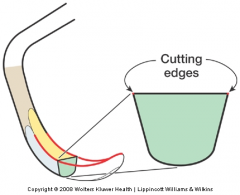
|
|
|
Universal Curet Unique Design Characteristics: Face to Handle |
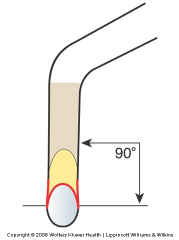
|
|
|
Universal Curet Uses |
|
|
|
Universal Curet: Columbia vs Barnhart Lower shank and Working-end |
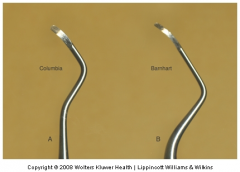
|
|
|
Universal Curet: Columbia 13-14 Lower shank and Use |
|
|
|
Universal Curet: Barnhart 5-6 Lower shank and Use |
|
|
|
Universal Curet: What should you remember to help select the correct end? |
|
|
|
Universal Curet: 4 cutting edges for molar |
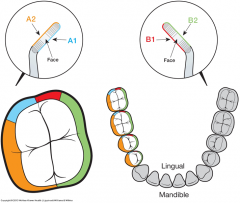
|
|
|
Universal Curet: Where should the face and toe be when inserting beneath the gingiva margin? |
|
|
|
Universal Curets Horizontal Stroke: What is the horizontal stroke extremely effective at? |
|
|
|
Universal Curets Horizontal stroke: Steps for Posterior Line Angles |
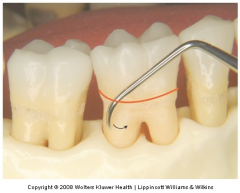
|
|
|
Universal Curets Horizontal Stroke: Steps for Anterior Midline |
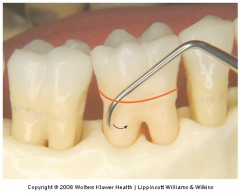
|
|
|
Universal Curets Handle Position |
|
|
|
Universal Curets Position on Anterior Teeth Which cutting edge is used |
Anterior = Accross Outer Edge = On
|
|
|
Gracey Curets What is special about Gracey Curets? |
|
|
|
Gracey Curets What type of shank and what is it suited for? |
|
|
|
Gracey Curets How is the toe different from universal curets? |
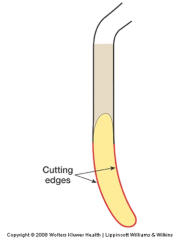
|
|
|
Gracey Curets How is the face in relation to the shank? |

|
|
|
Gracey Curets What is different about the cutting edges? |
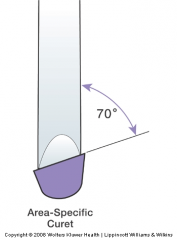
|
|
|
Gracey Curets How is the cutting edge angulated? |
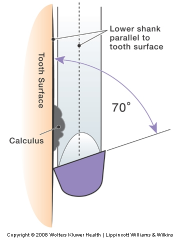
|
|
|
Gracey Curets What is important to remember about the lower cutting edge on a Gracey? |
|

